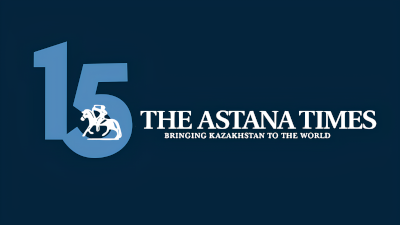ASTANA – S&P Global Ratings has affirmed Kazakhstan’s long-term sovereign credit rating at ‘BBB-’ and short-term rating at ‘A-3,’ maintaining a stable outlook despite rising fiscal pressures.

S&P logo. Photo credit: Ministry of National Economy
In its Feb. 21 release, S&P analysts explain the rating underscores Kazakhstan’s robust fiscal and external balance sheets, which continue to provide a solid cushion against external shocks.
“The stable outlook on the ‘BBB-’ long-term rating reflects our view that risks of protracted fiscal weakness and higher interest expenses for the government are mitigated by planned governance and economic reforms, as well as Kazakhstan’s strong asset buffers,” reads the statement.
The agency cautioned that rising domestic debt and reliance on the National Fund to plug budget gaps could strain the country’s fiscal framework over the medium term. Established in 2000, the National Fund was designed to accumulate the nation’s windfall hydrocarbon revenues.
“However, this practice could change as the government plans to implement additional limits on the fiscal usage of the National Fund funds from 2026. We forecast that net government debt will reach 12% of GDP by 2028, after nearly a net asset position in 2022,” write S&P analysts.
Stable economic growth
According to analysts, Kazakhstan’s economy remained “resilient” in 2024, driven by higher government spending. S&P projects GDP growth of 4.9% in 2025.
“We expect strong growth of 4.9% this year, partly helped by ongoing fiscal expansion and higher oil production from the expansion of the Tengiz oil field. Notwithstanding OPEC+ production quotas, the authorities estimate that total oil production could reach 96 million tons per year in 2025 and 106 million tons in 2027, up from close to 88 million in 2024,” reads the statement.
While the hydrocarbon sector remains a cornerstone of the economy—accounting for nearly 20% of GDP, over 30% of government revenue, and more than half of exports—S&P points out the vulnerabilities associated with this dependence.
Fluctuating oil prices continue to pose significant risks to fiscal stability, a concern compounded by the geopolitical complexities surrounding Kazakhstan’s primary oil export route through the Caspian Pipeline Consortium (CPC).
S&P notes Kazakhstan’s reliance on the CPC pipeline, which channels 80% of its oil exports through Russia to European markets, remains a critical vulnerability. While the government is making efforts to diversify export routes via the Baku-Tbilisi-Ceyhan (BTC) pipeline, volumes remain limited, and logistical challenges persist.
It warns that disruptions to the CPC pipeline—such as those caused by recent drone attacks—could “potentially pose some risks” to targeted oil production and export volumes this year.
S&P notes that medium-term growth prospects will likely moderate after 2025.
“Domestic demand and investment will likely soften as government spending growth slows. Government policy aims to diversify the economy through the National Infrastructure Plan, with projects in the utilities, transport, water supply, and waste-water sectors,” reads the report.
Pressures
S&P highlights that revenue shortfalls in 2024 driven by weaker oil prices, widespread tax exemptions and weak budgetary forecasting have widened fiscal deficits.
The agency estimates that the general government deficit reached 4.3% of GDP in 2024, exceeding the official figure of 2.7% due to S&P’s exclusion of the National Fund transfers from revenue calculations.
“To compensate for tax-revenue shortfalls, the National Fund of Kazakhstan provided one-time exceptional transfers to the government, channeled through dividends from Samruk Kazyna [sovereign wealth fund]. This was in addition to the guaranteed and targeted transfers in the budget,” reads the statement.
Kazakhstan’s fiscal path over the medium term will hinge on how effectively fiscal rules are implemented.
“We expect lower spending growth, efforts to broaden the tax base, and limits on additional National Fund transfers should reduce the fiscal deficit to 3.7% over 2025-2028. The government is planning measures to abolish exceptional transfers from the National Fund and to limit the size of targeted transfers in addition to current limits on guaranteed transfers,” reads the report.


